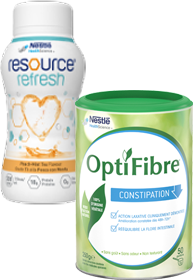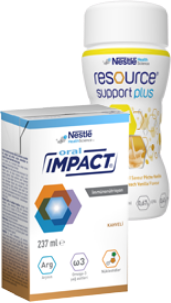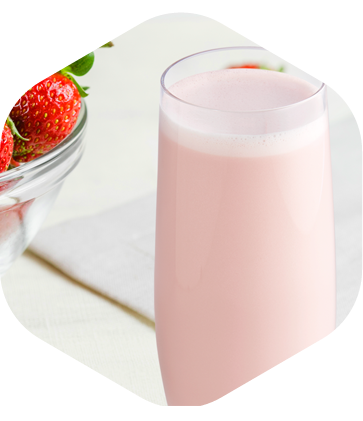Tips for Safely Preparing Food for Cancer Patients
Carefully choosing items and keeping a good hygiene when preparing meals are essential to avoid contamination.
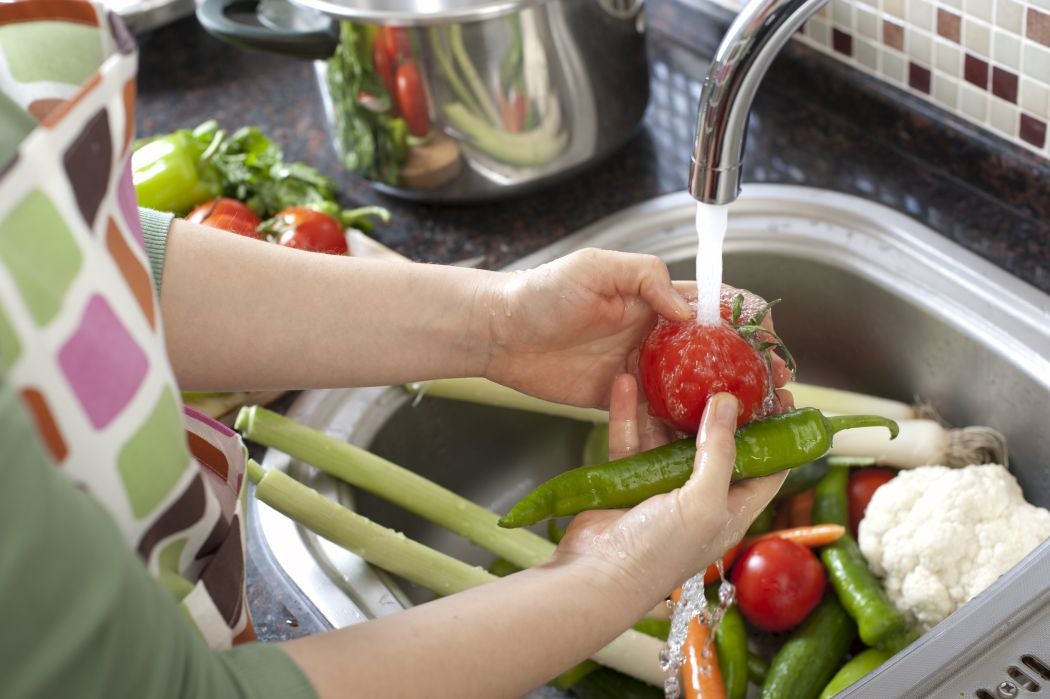
Having an adequate diet during cancer treatment helps the recovery process and prevents further health problems, such as malnutrition.1 But nutrients should not be your only concern: you need to make sure to also have a safe cooking process.2 This is because cancer patients tend to have a weaker immune system and may be more susceptible to infections, including those caused by contaminated water and food.
Tips for safely preparing food for cancer patients
Knowing how to choose, store and prepare food for cancer patients is an important way to prevent contamination and transmission of diseases. Therefore, patients themselves or the people who prepare their meals should know the safe steps.2
Personal hygiene - Hands, mouth, nose and skin in general have bacteria that can get into food. To prevent this, keep some things in mind:2
- Wash your hands thoroughly before handling food and whenever you start a different activity or touch different objects/surfaces, such as boxes, cabinets, dirty packages, the fridge, among others;
- Take off all accessories, such as watches, rings and bracelets, before washing your hands and starting to cook;
- Always keep your nails short and clean;
- Avoid sneezing, coughing, blowing your nose and chewing gum while handling food;
- Do not taste the food and put the same cutlery item back in the recipient with food without washing it first.
Choosing food - Consider the following aspects when buying products:2
- Do not buy food without proper information about its manufacturer;
- Check the hygiene of the place selling the products, e.g., whether it has bad smells, dirty shelves and floors, decomposed or leftover food;
- Do not buy products with crumpled, stuffed, mold, torn or leaky packaging;
- Meats should have a firm texture, without dark, greenish or gray spots, and should not have an unpleasant odor;
- Processed meat should not look sticky, moist/leaking, with greenish stains, or an unpleasant odor;
- Eggshells should not have cracks;
- Cheese should not be slimy or have mold on its surface;
- Grains, flours and cereals must not have weevil, insects, or a wet appearance, and must be tightly closed;
- Fish and seafood should have firm skin, shiny scales, without lacerations. The eyes must be bright and preserved. Do not buy if it has an unpleasant smell, bad appearance, poor adherence to bones or stains.
Food storage - Each ingredient has an ideal storage temperature, but, in general, you shouldn't leave any food at room temperature for more than 30 minutes.2
For pre-cooked and perishable food, or if there is no information available from the manufacturer, keep in mind the following guidelines:
- Milk and dairy products should be stored at a maximum of 44°F for up to five days;
- Eggs and similar products should be stored at a maximum of 50°F for up to seven days;
- Beef, pork, poultry and raw handled meat (exception: mixed skewers, stuffed beef rolls, breaded steak and meals using ground beef) shall be stored at a maximum of 39°F for up to three days;
- Mixed skewers, meals using ground beef, breaded steak and stuffed beef rolls should be stored at a maximum of 39°F for up to two days;
- Fish and raw handled fish products must be stored at a maximum of 35°F for up to three days;
- Clean, cut or peeled fruit/vegetables, juice and similar items should be stored at a maximum of 41°F for up to three days;
- Bakery and candy shop products with topping and filling that require refrigeration should be stored at a maximum of 41°F for up to five days;
- Cold cuts, and sliced, chopped or ground processed meat should be stored at a maximum of 39°F for up to three days;
- Cooked meals, with the exception of fish, shall be stored at a maximum of 39°F for up to three days;
- Cooked fish must be stored at a maximum of 35°F for up to one day;
- Desserts and dairy meals should be stored at a maximum of 39°F for up to three days;
- Mayonnaise and recipes using mayonnaise should be stored at a maximum of 39°F for up to two days.2
Food preparation – Besides following the best practices of food storage and personal hygiene, it’s also necessary to follow the steps below:2
- Make sure the food preparation area is clean before you start cooking. Otherwise, the area should be cleaned with a disinfectant solution;
- Break the food preparation in smaller steps and, at each step, wash the sink and utensils to avoid contamination;
- Perishable food should be defrosted in the fridge, and not at room temperature or in the microwave;
- Wash fruit and vegetables individually with running water to remove dirt, larvae and most microorganisms. Food eaten raw should soak for 15 to 20 minutes in a bowl with 35 oz of water and a tablespoon of bleach or hypochlorite, following the instructions on the label. Then, rinse it thoroughly with running water to remove the product;3
- Do not leave cooked meals at room temperature for more than 30 minutes;
- Use only clean utensils and cutlery when handling food.2
In addition to these tips for safe food preparation, follow any doctor’s and/or nutritionist’s dietary recommendations from the diagnosis until after treatment has ended.
References:
1 - INCA: José Alencar Gomes da Silva National Cancer Institute (“Instituto Nacional de Câncer José Alencar Gomes da Silva”). Healthy lifestyle during and after cancer treatment (“Estilo de vida saudável durante e após o tratamento do câncer”). Available at: https://www.inca.gov.br/sites/ufu.sti.inca.local/files//media/document//estilo-de-vida-saudavel-durante-e-apos-o-tratamento-de-cancer-2017.pdf. Access on: November/2019.
2 - São Paulo Municipal Health Department ("Secretaria Municipal da Saúde de São Paulo"). Manual of good practices in food handling.
3 - Sapiranga Municipal Department of Education ("Secretaria Municipal de Educação de Sapiranga"). Food Hygiene and Safety/Booklet. Available at: http://plataforma.redesan.ufrgs.br/biblioteca/pdf_bib.php?COD_ARQUIVO=14796. Access on: January/2020.
Know more about the subject
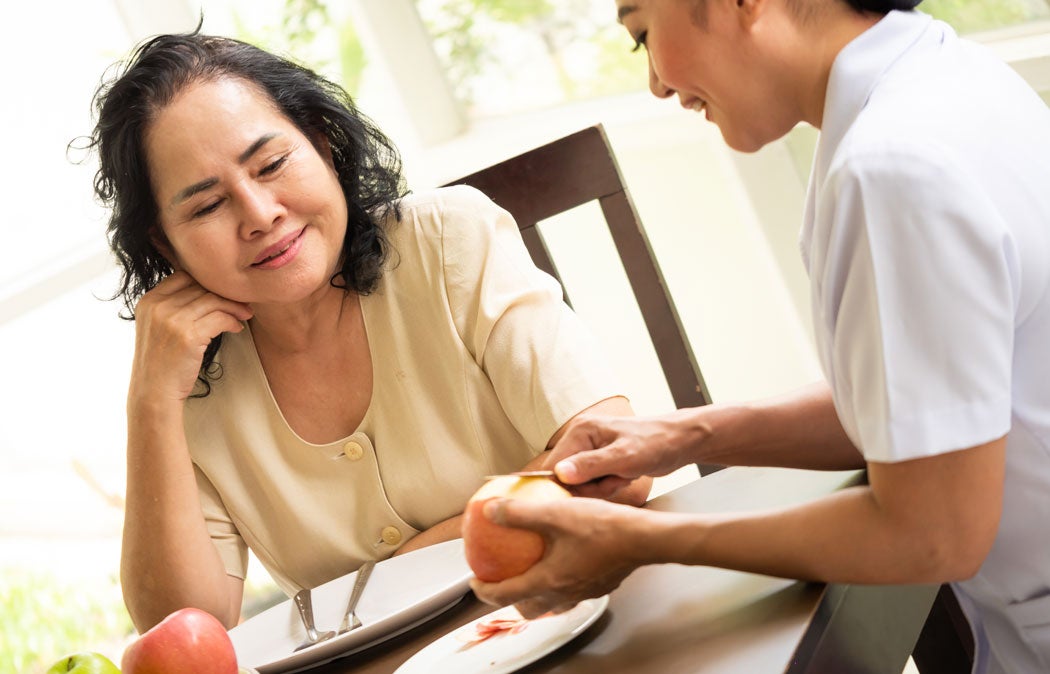
When A Cancer Patient Stops Eating: Advice for Caregivers
While chemotherapy is a leading treatment for cancer, it can cause many difficult and often unpleasant side effects that often affect a person’s day-to-day life1. Loss of appetite and eating problems are common side effects that many people with cancer face, caused by both cancer and its treatment1.
A Guide To Cancer Diets: Battling Cancer With Nutrition
Eating a healthy, balanced diet helps give your body the nutrients, calories, and strength it requires to fight off diseases.

How to Cope with Muscle Loss

How to Cope with Trouble Chewing and Swallowing

Psycho-Oncology’s Help on Patients’ Professional and Social Life after Treatment
Therapeutic strategies allow facing the challenges of moving forward

How Cancer Patients Can Benefit from Exercising
Exercising according to medical advice is great for patients’ rehabilitation and well-being

